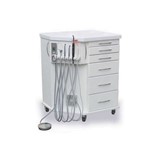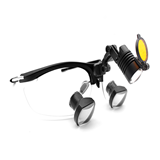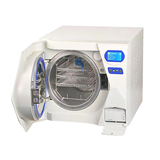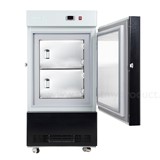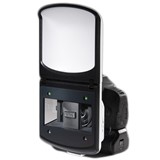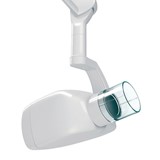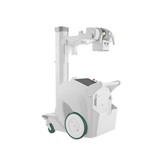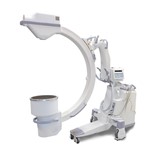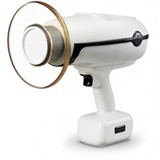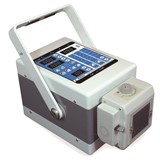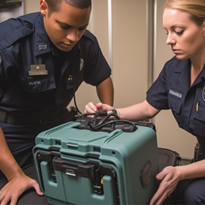Explore the latest innovations in medical imaging and what Australian clinics must know to stay ahead. Discover costs, compliance, training, and real-world ROI strategies in this 2025-ready guide.
Key takeaways
- Australia’s medical imaging market is set for strong growth, projected to exceed 2.3 billion by 2033, rising at a 7–7.5% compound annual growth rate from 2025.
- Portable and cloud-based imaging tools, such as lightweight X-ray scanners and teleradiology platforms, are boosting diagnostic access, especially in rural areas.
- AI-powered decision support, like Annalise.ai’s chest-X-ray tool used across South Australia, is improving diagnostic accuracy and reducing workload.
- Photon-counting CT scanners offer up to 45% lower radiation and 4× higher resolution, with systems now available in NSW.
- Key buying criteria include TGA approval, ARPANSA radiation compliance, cloud integration, staff training, and budget modelling.
- A staged implementation strategy, piloting in metro clinics before scaling to regional centres, can de-risk adoption and manage costs.
- Cost and ROI: High-end imaging systems can boost throughput and reduce admin costs. ROI improves with smart financing like leasing or government grants.
- Training needs: New tech demands skilled staff. Ongoing training via ASAR or AIR reduces errors, supports compliance, and smooths adoption.
- Future-proofing technologies include lung ventilation software, intraoperative MRI, and emerging 3D/4D ultrasound and photon-counting CT.
Australian market outlook and funding support
Australia’s medical imaging market is on the rise:
- Market value reached approximately 1.1 billion in 2024, projected to exceed 1.5 billion by 2030, growing at around 5.5% annually.
- Other forecasts estimate the market will reach 2.3 billion by 2033 (7.2% CAGR), driven by greater imaging adoption and telehealth expansion.
- Ultrasound leads in revenue, while CT systems, especially photon-counting CT, show the fastest uptake.
State-level funding supports this growth. NSW’s RIS-PACS upgrade is updating radiology infrastructure across Local Health Districts to improve reliability and workflow. Regional projects like the 10 million CT upgrade at Milton Ulladulla Hospital are boosting rural diagnostic access.
Key trends transforming medical imaging in Australia
1. Photon-counting CT scanners
This cutting-edge technology delivers exceptional image resolution with lower radiation:
- The NAEOTOM Alpha by Siemens is already in use at St George Private Hospital in Sydney, making it the first installation in the southern hemisphere.
- Compared to traditional CT:
- Radiation dose reduced by up to 45%
- Spatial resolution up to 4× higher
- Better differentiation of soft tissues, helping in cardiac, neuro, and vascular imaging
Though expensive (approx. 2–3 million per unit), these systems offer a long-term edge in clinical outcomes and operational efficiency, particularly for high-volume clinics and hospitals.
2. Portable and point-of-care imaging
Portable ultrasound and X-ray systems are being adopted across community health and rural outreach programs:
- Philips Lumify and Butterfly iQ+ are pocket-sized ultrasound devices used by GPs and paramedics, costing under 8,000–15,000
- Agfa DR 100s mobile X-ray systems are being rolled out in aged care settings to prevent unnecessary ED visits
- Real-time teleradiology integrations help clinicians consult specialists remotely and speed up decision-making
This mobility reduces patient transfers, enhances diagnostic coverage, and supports the National Strategic Framework for Rural and Remote Health.
3. AI-powered diagnostic support
Australian firms are leading global innovation in radiology AI:
- Annalise.ai, co-developed by I-MED and Harrison.ai, is one of the world’s most comprehensive chest X-ray AI tools
- Approved for use in South Australia’s public hospitals, where it’s reducing radiologist workload and flagging subtle pathologies
- AI is also helping with triage in trauma, stroke, and oncology cases by detecting time-critical conditions within seconds
Cost ranges from 1,500–5,000/month per site, depending on volume and use case, often structured via SaaS with bundled support.
Industries benefiting most from innovations in medical imaging
Several healthcare sectors in Australia are experiencing significant impacts from the latest medical imaging technologies:
- General practice: Portable imaging and AI tools enable faster, more accurate diagnostics onsite, improving patient care and data integration with My Health Record.
- Radiology and diagnostic centres: Advanced technologies like photon-counting CT and AI-powered analysis enhance image quality, reduce radiation, and speed reporting. Cloud PACS and teleradiology support remote consultations.
- Hospitals and multi-specialty clinics: Cutting-edge imaging, including intraoperative MRI, optimises surgical planning and streamlines cross-department workflows.
- Aged care: Portable X-ray and ultrasound reduce hospital transfers for frail residents, with AI aiding early detection of fractures and infections.
- Allied health providers: Ultrasound assists musculoskeletal assessments, supporting treatment in clinics and community settings.
- Rural and remote health services: Mobile imaging combined with telehealth bridges access gaps, allowing specialist support across distances.
- Oncology and specialised care: AI improves cancer detection and monitoring, enabling personalised treatment approaches.
These sectors are leading the charge in adopting innovations that boost diagnostic accuracy, operational efficiency, and patient outcomes across Australia.
Regulatory and compliance requirements in Australia
TGA compliance
- All imaging devices must be TGA-registered medical devices, meeting essential principles for safety, performance, and clinical validation
- AI tools (such as diagnostic support) must be listed on the ARTG (Australian Register of Therapeutic Goods)
Radiation safety (ARPANSA & state-level)
- Devices using ionising radiation (X-ray, CT) must comply with ARPANSA’s Radiation Protection Series guidelines
- State-level licensing applies (e.g., NSW EPA, VIC DHHS Radiation Use Licence)
- Radiation rooms must meet shielding, signage, and access control standards
Data privacy & cloud imaging
- All cloud-based systems must comply with the Privacy Act 1988 (Cth) and My Health Record Act 2012
- If storing images offsite or offshore, vendors must ensure data sovereignty, especially for integration with My Health Record
- ISO 27001 certification and end-to-end encryption are minimum expected standards
Real-world case studies from Australia
Case study: AI-assisted chest X-rays in SA hospitals
- South Australia Health introduced Annalise.ai in over 60 public hospitals for chest imaging
- Early results show:
- 15–25% faster reporting times
- Radiologist fatigue reduced, with improved detection of pulmonary nodules and pneumothorax
- Potential cost savings from reduced readmissions and missed diagnoses
Case study: Portable imaging in regional aged care
- Western NSW Local Health District deployed portable X-ray systems in regional aged care homes
- Resulted in:
- 35% drop in unnecessary ED transfers
- Faster diagnosis of falls, chest infections, and fractures
- Improved quality of life for elderly residents, reduced strain on ambulance services
How to approach decision-making in your clinic
Upgrading imaging capabilities is a multi-stage process. Here’s how you can structure your journey:
1. Identify clinical needs
- What modalities are most in demand? (e.g., MSK ultrasound for physios, chest X-rays for GPs, CT for trauma centres)
- What volume of studies do you expect weekly or monthly?
- Are you servicing remote or time-critical populations?
2. Consider future-proofing
- Will this equipment be compatible with emerging technologies (AI, cloud PACS, My Health Record)?
- Does the platform offer remote updates, scalable licensing, or multi-modality support?
3. Budgeting and funding
- Consider equipment finance solutions such as chattel mortgages, equipment leasing, or medical-specific low-doc loans
- Review eligibility for:
- Small Business Instant Asset Write-Off (up to 20,000 in 2025–26)
- State grants for rural diagnostics or aged care upgrades
- NDIS-funded imaging tools for disability support providers
4. Pilot, measure, then scale
- Begin with a single clinic or department, trial workflows, monitor image quality, and evaluate reporting performance
- Use KPIs such as:
- Scan time reduction
- Diagnostic accuracy improvements
- Staff satisfaction and patient throughput
- ROI metrics such as cost-per-study vs. revenue uplift
Detailed cost and ROI considerations
Investing in advanced imaging technology is a major financial decision. Consider:
- Upfront costs such as equipment purchase, installation, room modifications, and initial staff training. Photon-counting CT scanners, for example, can cost between $2–3 million.
- Ongoing expenses include software licenses, maintenance contracts, upgrades, and additional staff time.
- ROI factors: Improved diagnostic accuracy can lead to faster patient throughput and fewer repeat scans. Automation reduces admin costs and errors.
- Example: A regional imaging centre in Victoria reported a 15% increase in throughput and a 10% cost saving in claims processing after upgrading to integrated PACS and AI tools.
- Finance options in Australia include chattel mortgages, leasing, and government grants, each with different tax implications and cash flow impacts. Consult your financial advisor to choose the best fit.
Workforce impact and training requirements
New imaging technologies require more than just capital, they demand skilled people:
- Radiographers, sonographers, and technologists need training on equipment operation, safety protocols, and new software tools.
- Managing change is critical: Involve your team early, demonstrate benefits, and schedule training sessions to reduce resistance and errors.
- Australian providers can access certification and professional development courses through bodies like the Australian Sonographer Accreditation Registry (ASAR) or the Australian Institute of Radiography (AIR).
- Ongoing education ensures staff keep pace with evolving technology and compliance requirements, reducing downtime and improving patient care.
Frequently asked questions (FAQs)
If you’re considering upgrading or investing in medical imaging equipment, it’s normal to have questions about compliance, costs, Medicare rebates and logistics. Here are answers to some of the most common queries we hear from Australian clinics and diagnostic providers:
Is leasing medical imaging equipment tax-deductible in Australia?
Yes. If you're financing your imaging equipment through a lease or chattel mortgage, the repayments (including interest and depreciation) are typically tax-deductible as operating expenses. Always consult with your accountant for ATO-compliant structuring advice.
What are the main Medicare item numbers for diagnostic imaging rebates?
Rebates vary by imaging type and anatomical region. Some commonly claimed Medicare Benefits Schedule (MBS) items include:
- 58503 – Chest X-ray
- 58506 – Spine X-ray
- 55036 – CT scan of the brain (without contrast)
- 55054 – CT scan of chest and abdomen
You can view the full list of diagnostic imaging items and current rebate values on the official MBS online portal.
What happens if my clinic outgrows the current imaging system?
It’s a common challenge, especially for growing practices. Look for modular or upgradable systems that allow you to scale up without replacing the entire unit. Some vendors offer trade-in programs or future upgrade credits, asking about this during procurement.
Can I bill for portable imaging services outside my clinic?
Yes, in most Australian states you can provide mobile diagnostic imaging, but you must meet radiation safety and licensing regulations. This includes:
- Holding a valid radiation use licence
- Complying with state transport and shielding regulations
- Using portable shielding (e.g. lead barriers) when operating outside clinical rooms
Check with your local radiation health authority (e.g. NSW EPA, QLD Health Radiation Health) for specific mobile operation conditions.
Final thoughts
Medical imaging is at the core of modern diagnostics, and innovations are rapidly transforming what’s possible. Whether you’re a solo GP clinic, a multi-site diagnostic provider, or a hospital radiology department, staying ahead requires more than just equipment upgrades. It means understanding:
- The compliance and safety landscape
- The long-term return on investment
- How AI, portability, and photon-counting will reshape your service delivery
By following a staged, well-informed approach, you’ll not only enhance clinical outcomes but also position your clinic as a leader in diagnostic care.





